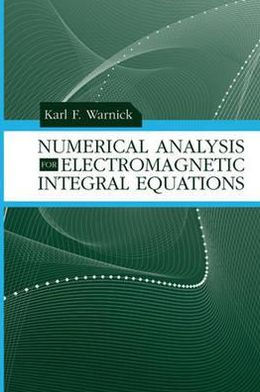Improve EM simulation efforts fast with this applications-focused resource. This unique volume is the first book on integral equation-based methods that combines quantitative formulas for predicting numerical simulation accuracy together with rigorous error estimates and results for dozens of actual electromagnetics and wave propagation problems. You get the latest insights on accuracy-improving methods like regularization and error-increasing effects such as edge singularities and resonance, along with full details on how to determine mesh density, choice of basis functions, and other parameters needed to optimize any numerical simulation.
Bridging the gap between abstract academic treatments and the real-world needs of engineers, this timely work introduces various surface integral equation formulations, approaches to discretizing the integral equations, and measures of solution accuracy. It gives you numerical methods for 2D radiation and scattering problems, emphasizing concrete solution error bounds with exactly given constants. Moreover, the book provides techniques for higher order basis functions and 3D problems, focusing on smooth scatterers and edge singularity effects. This informative reference also explores problems involving resonant cavities and structures, and features a comprehensive treatment of resonant scatterers. The final chapter covers the convergence of the fast multipole method with iterative linear system solvers, complete with practical methods for improving the efficiency of iterative solutions.
Improve EM simulation efforts fast with this applications-focused resource. This unique volume is the first book on integral equation-based methods that combines quantitative formulas for predicting numerical simulation accuracy together with rigorous error estimates and results for dozens of actual electromagnetics and wave propagation problems. You get the latest insights on accuracy-improving methods like regularization and error-increasing effects such as edge singularities and resonance, along with full details on how to determine mesh density, choice of basis functions, and other parameters needed to optimize any numerical simulation.
Bridging the gap between abstract academic treatments and the real-world needs of engineers, this timely work introduces various surface integral equation formulations, approaches to discretizing the integral equations, and measures of solution accuracy. It gives you numerical methods for 2D radiation and scattering problems, emphasizing concrete solution error bounds with exactly given constants. Moreover, the book provides techniques for higher order basis functions and 3D problems, focusing on smooth scatterers and edge singularity effects. This informative reference also explores problems involving resonant cavities and structures, and features a comprehensive treatment of resonant scatterers. The final chapter covers the convergence of the fast multipole method with iterative linear system solvers, complete with practical methods for improving the efficiency of iterative solutions.

Numerical Analysis for Electromagnetic Intergral Equations
219
Numerical Analysis for Electromagnetic Intergral Equations
219Hardcover

Product Details
| ISBN-13: | 9781596933330 |
|---|---|
| Publisher: | Artech House, Incorporated |
| Publication date: | 09/30/2008 |
| Series: | Artech House Electromagnetic Analysis |
| Pages: | 219 |
| Product dimensions: | 6.10(w) x 9.20(h) x 0.70(d) |
